NOTE: This article is Part 1 of a two-part series on George Stevens’ “Giant.” Click here for Jason’s interview with American Film Institute founder George Stevens Jr.
WASHINGTON — Growing up in San Angelo, Texas, filmmaker Hector Galán was well aware of the Hollywood classic shot in his home state. After all, “Giant” (1956) was James Dean’s final movie, co-starring Elizabeth Taylor and Rock Hudson, and earned 10 Oscar nominations, including a win for director George Stevens. But as a Latino, he was also aware of the film’s important social statement.
“It was really one of the first films — and now of course a classic film — that dealt with these issues of discrimination toward Mexican-Americans,” Galán tells WTOP. “Growing up in Texas, we always knew about the movie. Our parents would talk about it, and later as we grew, we watched it.”
Now, Galán has returned to his stomping grounds to examine the film’s human rights legacy in the new PBS documentary “Children of Giant,” which aired Friday as the season opener for “VOCES,” the arts and culture series by Latino Public Broadcasting, and is now available in its entirety online.
The 86-minute documentary includes interviews with the director’s accomplished son, George Stevens Jr., as well as surviving cast members Earl Holliman and Elsa Cardenas. The latter played Juana, the Mexican-American woman who marries a young Dennis Hopper, marking an interracial marriage 11 years before Sidney Poitier in “Guess Who’s Coming to Dinner” (1967).
“We’ve had several screenings (of the documentary) here in Texas with audiences,” Galán says, “And everybody that sees it says I’ve gotta go see that movie (‘Giant’)!”
Yes, “Giant” was a different kind of western — like John Ford’s “The Searchers” the same year — in that it grappled with racial prejudice in the Old West. While Ford examined racism toward Native Americans, Stevens examined the racial divide between Anglos and Latinos.
Such themes made Edna Ferber’s 1952 source novel instantly controversial, yet it was Stevens who made several key changes to drive the point home. One such change involves the supporting character of Angel (Sal Mineo), an impoverished Mexican-American, aided by Taylor at birth, who later goes off to fight for his country in the U.S. Army.
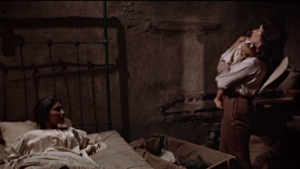
In the book, Angel comes home a war hero, but in the movie, he comes home in a coffin.
“I agree with George Stevens by changing it and having him come back in a coffin and buried in a segregated cemetery,” Galán tells WTOP. “It just stresses and really shows how these people were sacrificing their lives but yet were being treated as second-class citizens upon their return, even though they were defending America. To me that was a very powerful scene.”
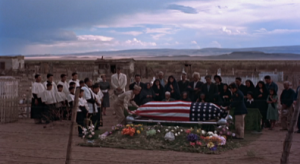
“The blatant discrimination that was occurring at the time against Mexican Americans and African Americans, we’ve overcome a lot of that,” Galán says. “But even to this day in Marfa, Texas, there’s still a segregated cemetery today. There’s a barbed-wire fence that separates both sides, and there’s a group of people that wants that fence torn down because of what it represents.”
You’ll notice the Texas and American flags are shown backwards in this symbolic funeral scene:
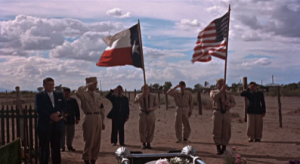
This is a far cry from the stars-and-bars nostalgically shown throughout “Gone With the Wind” (1939). Both films beckon instant comparison, as Reata is Tara re-imagined, with Hudson a sturdy Rhett Butler, Taylor a more patient Scarlett O’Hara, and the film’s scope just as massive. Stevens admitted he hardly noticed the four-hour length of “GWTW,” saying, “I was caught up in it and could have watched even more.” Mercifully, Stevens spared us the “more,” but at three hours and change, “Giant” was every bit the spectacle, marking Warner Bros.’ most successful film up to that point.
Still, the title didn’t merely advertise the spectacle. Its double meaning was to correct Tara’s most glaring flaw — its pro-slavery undertones — as Brown vs. The Board of Education called for the desegregation of schools two years earlier in 1954. Thus, the title is another way of saying, “be the bigger man,” as in being big enough to respect others different from you — a message ripe for any era.
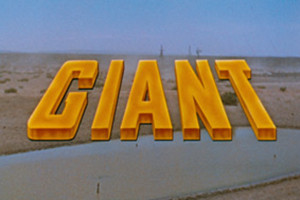
This growth into a “giant” is the journey of protagonist Jordan “Bick” Benedict (Hudson), the owner of Reata, a 600,000-acre Texas cattle ranch passed down for generations. Bick is all about the southern tradition, which happens to include white males running the show. This irks his progressive wife from Maryland, Leslie (Taylor), who adopts certain positives of the southern lifestyle (“I’m a tough Texian now”) but refuses to give in to the negatives, mocking sexism (“Set up my spinning wheel, girls”).
During this journey of man and wife, right and wrong, past and present, the Benedicts struggle against a cocky young handyman, Jett Rink (Dean), who hits a gusher of black gold and uses his “new wealth” to found a rival oil-drilling company. The Benedicts also struggle with how to raise their three children, as Bick wants his son (Hopper) to take over the ranch, while Leslie encourages his passion of becoming a doctor — and blesses his interracial marriage to a Latina bride (Cardenas).
Stevens masterfully manipulates audience sympathies through the cinematic language. For instance, in the scene where Hudson and Taylor argue over Angel’s medical care, Taylor is shown in a more positive light — literally — with well-lit shots, while Hudson’s reaction shots are kept in shadows.

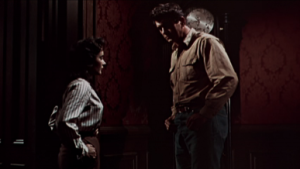
Can Hudson’s character become the giant his wife wants him to be? Is morality incompatible with his desire to protect a way of life? Ultimately, he must confront his own beliefs when a Mexican-American family is refused service at a roadside diner, sparking a brawl between Bick and the bigoted owner. As “Yellow Rose of Texas” plays symbolically on the jukebox, you’ll notice how Stevens pushes in for a final close-up on a sign reading: “We reserve the right to refuse service to anyone.”
Licking his wounds from the brawl, Hudson is surprised to hear that Taylor is proud of him getting knocked on his behind — because he finally stood up for justice. Together, they stare at their grandchildren — one light-skinned and one brown-skinned — as Stevens symbolically places white and black farm animals behind the playpen. This sort of racial harmony was truly ahead of its time.
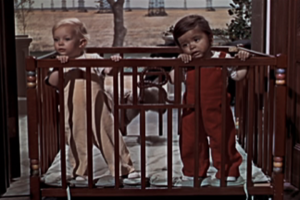
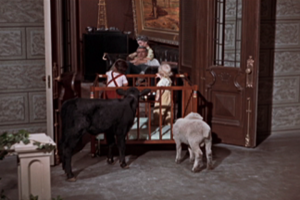
For all these genius techniques, “Giant” made the American Film Institute’s Top 100 Films when the list was first compiled in 1997. Tragically, the movie fell off when the AFI updated the list for its 10th anniversary in 2007. Here’s hoping that — thanks to filmmakers like Galán and dedicated sons like Stevens Jr. — this sleeping giant returns to its rightful place alongside “To Kill a Mockingbird” among the most important American films ever made, boasting a Stanley Kramer level of social importance, David Lean level of epic composition and John Ford level of symbolic imagery.
In the end, perhaps Stevens’ biggest secret is his decency, that is to say, his ability to criticize his subject matter, while maintaining a basic sense of fairness. He makes his points on pressing social issues without alienating the very viewers he’s trying to reach. Throughout, Stevens romanticizes the South for its gorgeous landscapes, hardworking attitudes and horse-riding culture. You don’t leave the film feeling anti-South, but rather believing there must be a better way. It shows the possibility of having the best of both worlds: a new open-mindedness to go along with romanticized tradition.
Thus, the film proves what many Southerners have been discovering for years — that southern pride can break away from a sinful past and Dixie can be all the better for it. Modern country music is a testament to this, as we head into the 50th annual ACM Awards. In this light, Kenny Chesney’s “Some People Change,” made famous by Montgomery Gentry, seems written specifically for Bick:
His old man was a rebel yeller,
Bad boy to the bone. He’d say,
“Can’t trust a color’d feller,”
He’d judge ‘em by the tone of their skin.
He was raised to think like his dad,
Narrow mind and full of hate,
On the road to nowhere fast,
Till the grace of God got in the way.
Then he saw the light,
And hit his knees and cried and said a prayer,
Rose up a brand new man, left the old one right there.
Look inward. Do the right thing. Step up and be a giant.
NOTE: This article is Part 1 of a two-part series on George Stevens’ “Giant.” Click here for Jason’s interview with American Film Institute founder George Stevens Jr.







